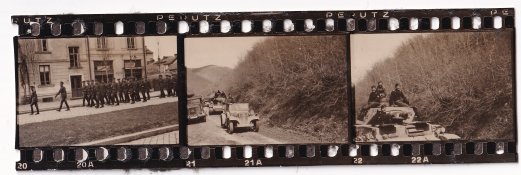fort_da
Member
Hello to all,
I'd like some advice since I'm far away for being an expert in these kinds of stuff. Recently, I have found in some old album, lots of 35mm film-like strips, but positive and non transparent. They are like small photos, in 35mm look like paper.
Here it is:

Does anybody have any idea what exactly this is, and if and how I can make something out of it? Scan it that is.
Thanks in advance.
I'd like some advice since I'm far away for being an expert in these kinds of stuff. Recently, I have found in some old album, lots of 35mm film-like strips, but positive and non transparent. They are like small photos, in 35mm look like paper.
Here it is:
Does anybody have any idea what exactly this is, and if and how I can make something out of it? Scan it that is.
Thanks in advance.





